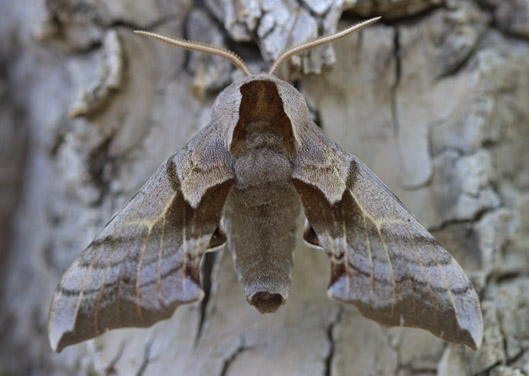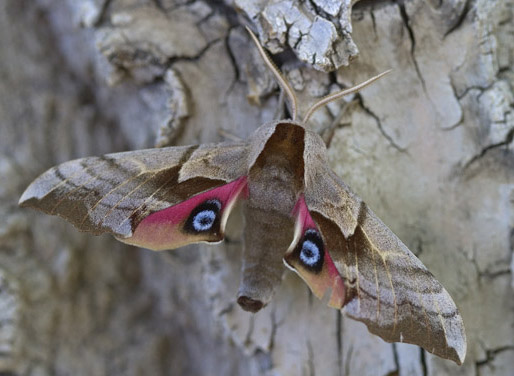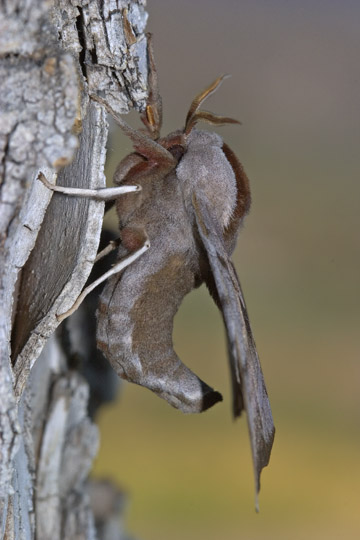 |
 |
|
|
|
|
Sphinx moths are powerful fliers at night, but during the day they usually use intricate camouflage patterns to remain hidden, as at upper left. However, if the crypsis fails, they often need to warm up before they can fly (they do this by shivering their wings). To gain some time, many species will flash startling eye-spots at predators, which may deter or delay attacks (upper right). This one has had a small chunk taken out of the right hindwing, despite the eye-spots -- but it survived. I think it's Cerisyi's sphinx, a fairly large species with a distinctly curved abdomen (lower photo) that is common along watercourses in the eastern Sierra Nevada mountains (as well as much of western North America). However, anyone who knows moths better is welcome to correct me. The photos were taken near Bishop, California. |
|
|
|


